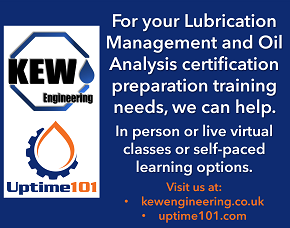Many questions surround hydraulic oil selection, from viscosity grades to base oil types to additives. This article answers pressing questions like: How do temperatures influence oil choice? Should you use zinc-based or non-zinc fluids? Should engine oils be used in hydraulics? And why does oil cleanliness matter so much?
How Do Weather Conditions Affect the Choice of Hydraulic Oils?
It might affect your choice in two ways: viscosity and viscosity index. Hydraulic oil viscosity tends to vary between ISO 32-100, and part of the decision process may include the ambient temperature, which can affect the bulk oil operating temperature.
As the viscosity (thickness) of the oil is highly temperature dependent, colder climates may require thinner oils, while hotter parts of the world may require thicker oils.
The viscosity index is also a fundamental consideration. This index measures the oil’s change in viscosity with temperature variation. You can classify hydraulic oils into two primary categories based on their viscosity index:
- Standard Viscosity Index: Typically ranges from 80 to 110.
- High Viscosity Index: Ranges from 120 up.
Oils with a high viscosity index are beneficial when stable viscosity is required at elevated temperatures. This stability is especially crucial when the ambient temperature is high or the operating machinery, like plastic injection molding machines, imposes high thermal stress on the oil.
Mobile equipment with high power density is another example where a high viscosity index hydraulic fluid would be advantageous.
When Should I Choose Zinc or Non-Zinc Hydraulic Oil?
The zinc in hydraulic oils is usually related to the antiwear package and essential oil components primarily responsible for the pump’s wear protection. There are primarily two categories:
- Zinc-Based: Contains zinc or ZDDP, a widely-used antiwear additive found in many engine and hydraulic oils.
- Zinc-Free: Oils without zinc. In some cases, oils may be advertised as “zinc-free” when elemental analysis shows traces of zinc – this is likely due to zinc-containing detergents rather than the antiwear additive.
It’s essential to understand that while zinc is a popular additive, it comes with challenges. Zinc toxicity can pose environmental concerns, especially if machinery, such as cranes, operates over water. In such cases, a zinc-free formulation might be preferable.
Additionally, zinc tends to break down at very high temperatures, leading to sludge formation. Thus, many of the newer “ashless” antiwear additives produce less sludge, making them a better choice in high-temperature situations.
What Kind of Hydraulic Fluids Are on the Market, and What Is the Best?
This question doesn’t have a straightforward answer. The “best” choice often hinges on specific applications and scenarios. So, let’s discuss the various hydraulic fluids available in the market.
Hydraulic fluids can be primarily classified based on their base oil into the following categories:
- Mineral-Based Hydraulic Oils: These are the most prevalent type, chosen in approximately 90 to 95% of applications. The inherent properties of mineral oil can be enhanced using additives. For instance, if a high viscosity index is desirable, formulators usually add viscosity index improvers to the mineral oil to achieve the desired performance.
- PAO (Polyalphaolefin) Synthetics: These are synthetic hydraulic oils. The primary advantage of transitioning from a high VI mineral to a PAO synthetic is primarily evident in frigid temperatures, where they carry a pour point advantage. For example, the pour point performance of neat PAO is in the order of -60°C at the lower viscosity grades. Thus, a fully synthetic hydraulic oil might be the ideal choice when machinery operates in exceptionally frigid environments, like wind turbines in northern Canada or mine sites in Russia.
- Synthetic & Natural Esters: These are frequently found in eco-friendly lubricants. If there is a requirement for a biodegradable hydraulic fluid, it will likely be an ester-based fluid, whether derived from vegetable sources or synthesized. Natural esters usually have reduced oxidation stability relative to mineral oils, while synthetic esters offer excellent temperature performance and low varnish formation.
- Phosphate Esters: Lubricants often consist of polyol esters or phosphate esters in high-temperature scenarios demanding fire-resistant properties.
On top of the base oil type, different oils will contain varying additive combinations (see zinc versus zinc-free above), which will cause the performance to vary.
So deciding which is “best” is not so straightforward – but rather, the conditions and application should be matched to the product.
Why Do Some Hydraulic Fluids Have an SAE Grade While Some Have an ISO Grade?
Navigating through the world of hydraulic oils, you’ll encounter various classifications that can be somewhat perplexing. In the industrial sector, the typical viscosity grades for hydraulic oils are identified as ISO grades like 32, 46, 68, or 100. However, if your domain is mobile equipment, you might stumble upon hydraulic oils labeled with SAE grades such as 10W or 30, 40.
The distinction between these two types is rooted in their formulation traditions. In the realm of mobile equipment, there was a history of creating “cheap and dirty” formulations. This process involves taking an engine oil and reducing the concentration of its additive package.
Despite this reduction, the oil retains many characteristics of an engine oil, including antiwear properties and the presence of detergents, which are uncommon in industrial hydraulic oils. This type of oil is often called a “cutback engine oil,” and it’s why you’ll find mobile equipment hydraulic oils using the SAE (Society of Automotive Engineers) viscosity grading system.
Nowadays, having an SAE viscosity grade does not necessarily mean that the hydraulic fluid is a cutback engine oil, but rather can signify it is designed for mobile equipment applications.
One of the significant differences between hydraulic oils tailored for mobile equipment versus those for industrial applications lies in their detergency level. Detergents in hydraulic oil play a pivotal role in how the oil interacts with water.
Oils with detergency will typically hold onto water—a characteristic that might benefit systems with small sumps where the maintenance team is likely to remove contaminants by performing an oil change. Conversely, in industrial systems where the reservoirs are significantly larger, the desired property is for the oil to allow water to separate, forming a distinct layer that can be easily drained off.
Can I Use Engine Oil as Hydraulic Oil?
While technically, this is possible, it’s generally not advisable. To understand why, let’s examine engine oils’ distinct functions and formulations compared to hydraulic oils.
Engine oils are crafted to withstand the harsh conditions of combustion engines. They need to handle contaminants like soot, water, and acids, which are byproducts of combustion. This is why engine oils typically have a high Total Base Number (TBN) and include dispersants to cope with these elements—features not commonly found in hydraulic oils.
In contrast, hydraulic oils are designed with different priorities in mind. Where an engine oil is over-engineered to retain contaminants until the next oil change, hydraulic systems often require the opposite.
For instance, in many industrial applications, you’d want water to separate from the oil easily so it can be removed, ensuring the smooth functioning of the hydraulic system.
Employing engine oil in a hydraulic system could lead to suboptimal performance. The engine oil’s propensity to hold onto water and other contaminants might disrupt the hydraulic system’s operation, which could be designed to purge these contaminants efficiently.
Is Oil Cleanliness Important to Hydraulic Oils?
In the world of hydraulics, the cleanliness of oil is not just a preference—it’s a mandate for the longevity and efficient operation of the system. An excellent demonstration of the effects of cleanliness on the life of hydraulic assets can be found in publicly accessible life extension tables, demonstrating a direct correlation between oil cleanliness and component lifetime.
Consider this: by improving the ISO cleanliness code of hydraulic oil from, let’s say, 24/22/19 to 19/17/14, the theoretical life extension is 4x – a remarkable return on investment considering the typical costs for oil filtration versus the capital cost of a new hydraulic system.
This significant life extension is primarily due to reducing contaminants that can cause wear and tear on the system’s components.
Contaminants are a primary contributor to wear in hydraulic systems, but their impact doesn’t stop there. Hydraulic controls, particularly servo valves, operate under tight tolerances, making them highly sensitive to contamination.
The presence of contaminants can lead to ‘silting’ or ‘servo sticking,’ where the valves do not actuate smoothly. This issue can cause a delay or ‘lag’ in the system’s response, where the actual movement does not align with the commanded action, leading to operational errors.









